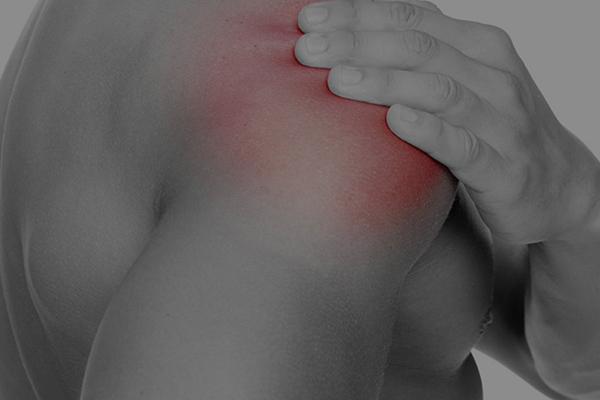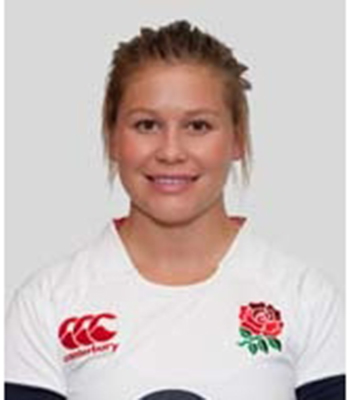Shoulder & Chest
Injuries
Shoulder and chest injuries can severely impact on a person’s ability to perform normal daily functions. Simple tasks like raising your arms and reaching out to grab something can bring about intolerable pain and discomfort. However, many shoulder complaints respond very well to manual therapy and rehabilitation. One of the main issues with shoulder injuries is they become far worse when left untreated and quite often simple exercises and postural changes can make a huge impact.


Common treatable conditions include:
– Frozen Shoulder
– Shoulder Impingement
– Rotator Cuff Tear
– Shoulder Dislocation
Frozen shoulder (adhesive capsulitis) is a condition which can take many years to resolve, particularly if left untreated. In this condition the capsule which surrounds the shoulder joint tightens and reduces its movement. This usually occurs following another injury such as rotator cuff tendinopathy or a broken arm whereby the shoulder is not used for prolonged periods. It can also follow conditions such as a stroke, again a situation where the shoulder is not being used. This lack of activity reduces fluid within the joint and restricts movement. Initially it can be painful but over time the pain will usually subside, however restriction will continue over the coming months and possibly years.
Symptoms of frozen shoulder may include:
- Early stage: shoulder movement causes pain, range of movement becomes restricted
- Frozen stage: Pain diminishes, however loss of movement continues
- Thawing stage: Pain and movement begin to return
- Painful at night
- Disturbs sleep
Shoulder impingement is a condition which causes pain upon lifting your arms upwards or backwards. It occurs as a result of the rotator cuff muscles which attach the upper arm to the shoulder blade becoming pinched under an area called the acromion. When the arm is in a neutral position there is usually a space below the acromion where the rotator cuff muscles runs underneath to attach to the upper arm. When the arm is lifted and there is potentially mis-aligned shoulder joint and / or inflammation this space becomes very restricted causing impingement. Symptoms of this condition are:
- Pain upon lifting arm above head
- Pain reaching behind back
- Shoulder weakness
- Pain that gets worse at night
Treatment of this condition would typically involve the use of joint mobilisations and soft tissue therapy to release tight structures and improve range of movement. Corrective exercises to re-balance the muscles in the shoulder and chest area would also be employed.
The rotator cuff is a group of 4 muscles that work together bringing the head of the upper arm tightly towards the scapula which forms the shoulder joint. Each muscles pulls the head of the upper arm from different directions helloing prevent dislocation of the shoulder and facilitating good alignment. When any of these muscles undergo significant trauma then either a partial or full tear of these muscles can occur. The symptoms of this condition are:
- Difficulty lifting or rotating arm
- Weakness in shoulder
- Pain when lying on arm
- Crepitis or crackling when moving shoulder
The shoulder joint is the articulation of the upper arm (humerus) and the shoulder blade (scapula). The upper arm sits into the cup shaped part of the the scapula named the somewhat shallow Glenoid cavity. The head of the upper arm is held in this cavity tightly by the rotator cuff muscles, ligaments, other connecting muscles and a joint capsule. When the upper arm is detached from this cavity through either weakness, seizures, falls or other trauma then the shoulder is described as dislocated.
- Intense shoulder pain
- Numbness and weakness in arm, neck, hands and fingers
- Arm looks to be in an unnatural position (sulcus sign)
- Laxity in the shoulder joint
From the onset of injury the arm needs to be safely relocated back into the scapula as soon as possible . Following relocation conservative treatment such as ice packs to reduce pain and swelling can be used, as well as the use of a sling or brace. If a shoulder is severely dislocated and unable to relocate it may require surgery and take 3-6 months with rehabilitation to return to normal function. Electrotherapy can be used to treat the pain and inflammation. And to minimise the risk of re-injury conditioning exercises that develop strength in the rotator cuff muscles are an important part of recovery.
Inside the shoulder joint are small fluid filled sacs called Bursa. The purpose of Bursae is to prevent friction between bones and tendons in the joint, acting as a cushion between these structures. However sometimes they become inflamed through overuse and dysfunction in the joint, causing shoulder bursitis. This condition is very common in tennis players, swimmers, gardeners, musicians and manual workers. The symptoms of this condition include:
- Pain when using your arm for lifting
- Pain performing circular movement with your arm
- Pressure and discomfort when applying force to the tip of the shoulder
- Pain which exacerbates when lifting arm to the side
- Swelling around the shoulder
- Reduced should range of movement
- Loss of arm strength
Osteoarthritis is a condition that occurs as a result joint degeneration when the cartilage covering the end of bones wears away. This can create bone spurs as the now exposed bone rubs against the other bone it articulates with. This condition is more often associated with people over 50 years old, however it can occur in younger people if they experience other injuries in the shoulder such as dislocation. Symptoms that are synonymous with arthritis include:
- Pain whilst moving the shoulder
- Pain after moving the shoulder
- Pain in the shoulder whilst sleeping
- Limited range of movement and stiffness
- Cracking, grinding or clicking of joint, which may or may not be painful








